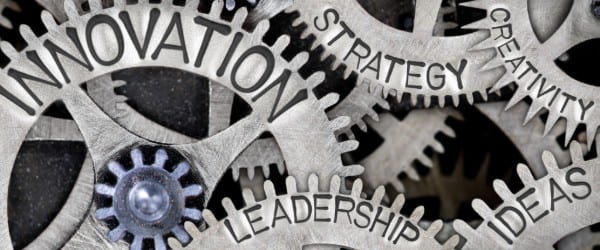Dr Hadi Abulrub argues the key to facing environmental challenges lies in intelligent manufacturing, smart infrastructure, sustainable energy and engineering modelling.
Creativity and innovation have been the drivers of social, economic and cultural progress for millennia. The Industrial Revolution accelerated our capacities and there has been exponential growth ever since – in the products and services we use to enhance our lives as much as the number of people across the world for whom these tools have become indispensable.
But have the costs been worth it?
Judging by the state of the world, the answer is no. We live in turbulent times, resulting in large part from our over-reliance on the Earth’s resources. And the stakes are high, especially in the context of the United Nations’ 2030 Agenda for the Sustainable Development Goals (SDGs) – a mere ten years remain to meet the ambitious task of setting the world on a more viable path for the sake of our collective prosperity.
How can we fulfil the complex needs of a growing population in a way that can both extend the lifespan of the finite resources that remain, and ensure the prosperity of future generations?
Conscience over convenience
Responsible consumption and production is the focus of the UN’s 9th SDG which highlights the scale and urgency of the challenge: the acceleration of worldwide material consumption has led to the over-extraction and degradation of environmental resources. According to the UN, in 1990 some 8.1 tons of natural resources were used to satisfy a person’s need, while in 2015, almost 12 tons of resources were extracted per person.
As the SDGs emphasise, the only way through is via inclusive industrialisation and innovation, sustainable economic growth, affordable energy and sustainable management of the Earth’s resources.
Recent years have seen an exceptional rise in our environmental consciousness, with consumers making more discerning choices about what and how much they buy and who they buy from. The growth of the sharing economy is further evidence of this shift in mindset towards a value-based economy, where people are increasingly looking to rent, recycle and reuse.
Corporations are responding in a similar vein. Whereas once the linear model of extraction, manufacture, distribution, consumption and disposal reigned supreme, more companies now realise that the resulting material waste and environmental damage is neither justifiable nor sustainable.
The circular economy
There is hope in the emerging model of closed-loop manufacturing and production, where there is a longer-term view focused on ensuring lasting quality and performance. Waste is being designed out of the process, with a greater focus on resource. For instance, the Belfast-based lighting manufacturer Lumenstream is using service-based business models to disrupt the industry with a servitised approach.
Servitisation means that goods are lent to customers in such a way that the company maintains full ownership of its products, from manufacture through to repair, to recycling. The company, the customer and the product are part of one interdependent ecosystem. The customer receives all the benefit without the need to worry about the physical product itself.
Liberation and leadership
One of the effects of the digitised world has been the accelerated march towards automation. According to research carried out by the McKinsey Global Institute, about half the activities people are paid for, which equates to almost $15 trillion in wages in the global economy, could be automated by around 2055.
Some argue this signals the redundancy of the human workforce. Is that really true? Are we not capable and intelligent enough to see things differently?
After all, how we respond, and whether the economy, the planet and people suffer or thrive will depend on a radical shift in our thinking. Building a more sustainable economy will require us to reimagine the world, while applying some creative problem-solving, logical thinking, and socio-cultural and emotional intelligence – qualities that are the sole preserve of human ingenuity.
As researchers, educators and scientists, engineering a brighter future has to be our focus.
This is why at the University of Bristol, we’re committed to supporting the future leaders in the engineering sector who will take the helm in intelligent manufacturing, smart infrastructure, sustainable energy and engineering modelling.
Redefining our humanity
This shift in awareness is something that I see on a daily basis, in the perspectives of the students who join us and in the way they view the challenges we face – in an educational setting and in a global context.
The so-called Fourth Industrial Revolution is already underway, which is concerned with maximising human health and wellbeing, facilitating interconnectivity and safeguarding our shared planet. These are the concerns of students who are seeking to make a difference in the world by developing the skills they need to become active agents for progressive change.
It’s this conscientious spirit, combined with entrepreneurial drive that has the potential to come up with a solution to the complex needs of a global society.
The next generation will effectively be responsible for redefining our humanity in a digitised world. It’s an immense challenge – and a tremendous opportunity to influence our collective future.
-------------------------------------
This blog is written by Cabot Institute member Dr Hadi Abulrub, from the Faculty of Engineering at the University of Bristol. Hadi is also the Programme Director of the new MSc in Engineering with Management, designed for graduates who wish to lead in the new era of engineering and technology. This blog was reposted from the Faculty of Engineering blog. View the original post.
| Hadi Abulrub |

